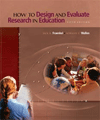 |
1 |  | 
Which of the following is not a characteristic of historical research? |
|  | A) | It focuses primarily on past materials and events. |
|  | B) | It relies on naturalistic observation for valid data collection. |
|  | C) | It facilitates prediction of the effects of policy. |
|  | D) | It can be used to test hypotheses about relationships or trends. |
 |
 |
2 |  | 
Which of the following is best classified as a source other than a relic? |
|  | A) | a piece of furniture |
|  | B) | a legal record |
|  | C) | an original painting |
|  | D) | a monument |
 |
 |
3 |  | 
The process that a researcher uses to verify that the contents of a document are accurate is known as |
|  | A) | internal criticism. |
|  | B) | external criticism. |
|  | C) | internal validity. |
|  | D) | external validity. |
 |
 |
4 |  | 
Which of the following is most likely to be a secondary source? |
|  | A) | a book about educational theory in the early 1900s |
|  | B) | a soldier's letter home during the Korean War |
|  | C) | minutes from a university faculty meeting held in 1892 |
|  | D) | a frontier family photograph |
 |
 |
5 |  | 
If a researcher uses a tape of legend from a Tribal elder as a source of data, he is using a data source known as a(n) |
|  | A) | document. |
|  | B) | relic. |
|  | C) | secondary source. |
|  | D) | oral statement. |
 |
 |
6 |  | 
Which of the following is not one of the four essential steps in historical research? |
|  | A) | defining the problem |
|  | B) | searching for relevant source material |
|  | C) | secondary source |
|  | D) | oral statement |
 |
 |
7 |  | 
Which of the following is most likely to be a primary source? |
|  | A) | a miner's letter home during the Gold Rush |
|  | B) | a poem expressing a miner's feelings |
|  | C) | an article about educational theory in the early 1900s |
|  | D) | a film about battlefield maneuvers in the Civil War |
 |
 |
8 |  | 
Which of the following is not a disadvantage of historical research? |
|  | A) | it permits the investigation of topics and questions that can be studied in no other way |
|  | B) | sampling of information may be biased |
|  | C) | measures used in other methods to control for threats to internal validity are not possible in a historical study |
|  | D) | validity of information is very difficult to check |
 |
 |
9 |  | 
Which of the following is not an advantage of historical research? |
|  | A) | can provide a richness of information |
|  | B) | permits the investigation of topics and questions that can be studied in no other way |
|  | C) | can be used to test hypotheses |
|  | D) | the validity of information is questionable |
 |
 |
10 |  | 
Most historical source material can be grouped into which four basic categories? |
|  | A) | relics, documents, oral statements, and numerical records |
|  | B) | relics, oral statements, museum pieces, and numerical records |
|  | C) | museum pieces, documents, oral statements, and numerical records |
|  | D) | relics, letters from parents to children, oral statements, and numerical records |
 |
 |
11 |  | 
Census data is best described as which kind of historical source material? |
|  | A) | relic |
|  | B) | document |
|  | C) | oral statement |
|  | D) | numerical record |
 |
 |
12 |  | 
An interview with a World War II combat veteran is best described as which kind of historical source material? |
|  | A) | relic |
|  | B) | oral statement |
|  | C) | numerical record |
|  | D) | document |
 |
 |
13 |  | 
A letter from Winston Churchill to Mrs. Roosevelt is best described as which kind of historical source material? |
|  | A) | a document |
|  | B) | a relic |
|  | C) | an oral statement |
|  | D) | a numerical record |
 |
 |
14 |  | 
Which of the following questions does not apply to internal criticism? |
|  | A) | Could the described event have taken place? |
|  | B) | Did the author have an axe to grind? |
|  | C) | Would people behave as described? |
|  | D) | Where was the document written? |
 |
 |
15 |  | 
A researcher is studying a speech given by a presidential candidate about education in the U.S. She is comparing what was said to other information. She is engaged in |
|  | A) | content analysis. |
|  | B) | internal criticism. |
|  | C) | external criticism. |
|  | D) | a waste of time. |
 |



 2003 McGraw-Hill Higher Education
2003 McGraw-Hill Higher Education